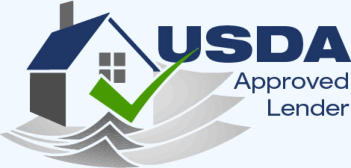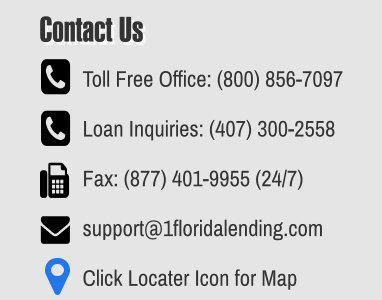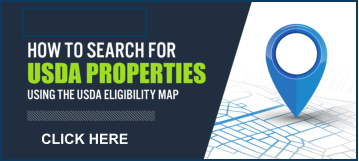





1st Florida Lending Corp., a registered Mortgage Lender
Orlando servicing only the State of Florida, offering over
48 loans programs including Conventional Loans, Non-
Conforming Loans, FHA Loans, VA Loans, USDA Loan,
Self-Employed Loans, Bank Statement Loans, No-Doc
Loans, Reverse Mortgage Loans, ITIN Loans, Rental
Investment Loans, to name a few and specializing in
Bank Statement Loans or “stated loans” requiring no Tax
Return verification and much more. * No broker or
lender fees are for FHA,VA, USDA and Conventional
loan types
Main Office: 2151 Consulate Dr. * Suite 8 * Orlando,
FL., 32837 * Telephone * (800)856-7097 * (800) 655-
1345 * (407) 300-2558 * Fax (877) 401-9955
* Disclaimer: All Loan programs, rates and terms can
change without notice and are subject to credit and
underwriting approval. Loan charts highlight min/max
constraints, assumptions & random scenarios only. We will
always work hard to approve your loan but there are no
guarantees of any kind expressed or implied that any loan
we be approved. Licensed in Florida Only. When Banks
Say No ! We Say YES ! ® is a registered trademark owned
by 1st Florida Lending Corp. Florida lender license #
MLD106.
© 2007 - 2025 1st Florida Lending Corp. - All rights reserved






USDA HOME LOANS

TURNED DOWN BY YOUR LENDER? CALL US!



A USDA loan (also called a Rural Development
Loan) is a government insured home loan that
allows you purchase a home with NO Money
Down. USDA Home Loans offer 100% financing to
qualified buyers, and allow for all closing costs to
be either paid for by the seller or financed into the
loan. USDA offers some the lowest rates of any
loan, and you will always have a fixed interest rate.
1st Florida Lending in an approved lender under
the USDA Single Family Housing Guaranteed
Loan Program and we are known for our
experience and expertise with the USDA home
loans.
What are the 9 unique benefits of a USDA
Loan?
1.
100% Financing: Reduces out-of-pocket
costs.
2.
No Maximum Loan Limits: Mortgage amounts
are determined by loan qualifying unlike FHA and
Conventional loans
3.
Seller Contributions: USDA allows sellers to
pay for all of a buyer's loan-related closing costs.
In addition, they can contribute up to 6 percent of
the loan amount
4.
Financing Closing Costs and Pre-Paid
Settlement Charges: When the appraised value is
higher than the sales price. This allows borrowers
the option to finance these expenses.
5.
No Pre-Payment Penalty: With a USDA
Rural Housing government backed Loan there is
no early payoff penalty.
6.
Flexible Credit to Qualify: USDA guidelines
offer reduced waiting periods to qualify after a
short sale, bankruptcy, or foreclosure when
compared to conventional programs. Additional
exceptions can be made for even shorter waiting
periods depending on the merits of the borrowers’
financial merits and if minimum credit conditions
are meet.
7.
The minimum credit score for a USDA loan
approval is 620, We offer lower credit score
approvals at 580.
8.
NO Maximum Loan Amount
9.
More flexible guidelines (the ability to get a
loan 3 years out of bankruptcy or foreclosure)
Q: What is a USDA loan?A: A USDA loan is a
loan program insured by the Federal Government
(US Department of Agriculture) and is designed to
help those families that desire to own a home in
small communities or in rural areas.
Q: How much do I have to put down for a
USDA loan?: Loan terms include 100% financing,
however there are closing costs associated with
the loan. In most instances the seller can or will
pay the part or all of the closing costs. When a
seller will not pay the costs and the home
appraises for more than the purchase price then
the costs can be financed into the loan (not to
exceed the appraised value). This means that
technically a buyer can purchase a home with
absolutely no money of their own.
Q: Can I get cash back at Closing on a USDA
loan?: The borrowers may not receive any cash
back at closing, other than the documented
amount representing costs paid in advance by the
borrower from their personal funds (i.e., earnest
money deposit, appraisal, credit report fees). Tax
pro-rations may not be given to the borrowers in
the form of cash back at closing. Any tax pro-
rations resulting in cash back to the borrower must
be applied as a principal reduction. The same
applies to any excess funds remaining from seller
paid concessions.
Q: What areas are eligible for USDA loans?:
Most rural areas qualify for USDA financing. There
are however many areas just outside major
metropolitan areas that will qualify as well. These
outlying areas are still considered small
communities.
Q. what are the income limits for USDA loans?
USDA income limits Florida
In general, Florida households with 1–4 members
can have a max $110,650 gross income per year.
Some high-cost counties are even higher.
Households with 5+ members can make even
more, over $146,050 in certain counties. USDA
also allows income deductions for dependents,
child care expense, elderly, disabilities, etc. USDA
loan limits by county may be higher to account for
cost of living.
Q: Are co-borrowers allowed on a USDA loan?:
Allowed. The maximum number of borrowers
allowed on a single transaction is four. Income
from all borrowers and non-borrowers occupying
the subject property must be considered when
calculating qualifying income.
Q: How long after a bankruptcy can someone
qualify for a USDA loan?: Generally
bankruptcies are not allowed within the last 36
months.
Q: Do I have to pay off collection accounts
when qualifying for a USDA loan?: Applicants
are expected to demonstrate a reasonable ability
and willingness to meet obligations as they come
due. It is the underwriter’s responsibility to
determine what collection accounts, if any, should
be paid in full by the applicant prior to or at closing,
and based on the strength of the credit profile.
Evidence of meaningful financial reserves and if
the account(s) have the potential to affect the lien
position or diminish the borrower’s equity must be
considered. The underwriting decision must be
fully documented on the underwriting analysis.
Q: Are USDA Loans, or Rural Development
Loans, only available for low income
borrowers?: There are income limits for USDA
Loan borrowers. However, these income limits are
set to accommodate low-to-moderate income
levels. These income limitations are based on
family size, and vary by State and County. In most
cases, applicants for the loans may have an
income of up to 115% of the median income for the
area. To find out what the Maximum USDA Loan
income limits are for your area, contact the USDA
Loan Agency, or fill out the contact form on this
page.
Q: What is the difference between a USDA
Loan and a Rural Development Loan?: There is
no difference between a USDA Loan and a Rural
Development Loan. The terms can be used
interchangeably. Both USDA Loans and Rural
Development Loans refer to the government
guaranteed loan program that lets you borrow up
to 100% of your home’s value – Meaning no down
payment is required.
Benefits of these USDA Rural Development
Loans include:
•
No Money Down
•
No Monthly Mortgage Insurance
•
All Closing Costs Included in Loan
•
Relaxed Underwriting Guidelines
•
NO Maximum Loan Amount
•
NO assets needed to qualify
•
Flexible Credit Guidelines
•
Competitive, Fixed Interest Rates
Q: Who Is Eligible for a USDA Loan?: Any
individual or family purchasing their primary
residence in a qualifying rural area may be eligible
for a USDA Home Loan. These qualifying areas
are generally defined as being outside the city
limits or consisting of a population of 20,000
people or less.
USDA Loan Eligibility Guidelines To qualify for
a USDA Loan, the prospective borrower must:
•
Show proper legal capacity to own property in
the U.S.A
•
Meet or fall beneath the income limitations
•
Monthly housing costs must meet a specified
percentage of gross monthly income
•
Credit history must indicate an ability to meet
financial obligations
•
The borrower cannot currently own a home
•
Individuals must have insufficient resources
to qualify for a conventional home mortgage
Q: What is the maximum amount that I can
borrow with a USDA Guaranteed Loan?: There
is no set maximum amount for a USDA Rural
Development Loan. However, the total amount a
person can borrow depends on a number of
factors, including:
•
Value of Home
•
Monthly Income
•
Debt to Income Ratio
In most cases, the maximum amount available for
a USDA Loan will be equal to 100% of the
appraised value of the home. Because the
eligibility requirements for a USDA Loan depend
on a number of specific factors, including the
county where the home is located, your current
income and your credit history, it is important to
work with a certified USDA Loan agent who
understands your needs. For the answers to your
questions, contact the USDA Loan Agency today.
Q: What types of property can be purchased
with USDA Home Loans?: When an individual or
family is seeking a USDA Home Loan, the property
must be used as the primary residence. A Rural
Development Loan may be used in the purchasing
of:
•
Condos
•
Planned unit developments
•
Manufactured homes
•
Single family residences
•
Other Factors to Consider When Seeking a
USDA Home Loan
Both new and existing homes are eligible. In
addition, there is no restriction placed on the
design, size or layout of the home. The
prospective property, however, must be declared
as safe, sound and sanitary, meeting all the
necessary building requirements in the area.
Q: Are there any associated upfront costs with
a USDA Loan?: The terms of your USDA Loan
include 100% financing, with no required down
payment. However, just like a traditional loan,
there are associated closing costs.To cover the
closing costs on your USDA Loan, you can choose
to:
•Pay all or part of the closing costs upfront
•Roll the closing costs into the overall loan.Take
note that only the difference between the agreed
upon contract price and the appraised value of the
home can be used to finance the closing costs
when seeking a USDA Mortgage. In other words,
your USDA Home loan will not cover more than the
appraised value of the property.
Q: What is PMI and Does My USDA Loan
Require It?: PMI stands for Private Mortgage
Insurance. For traditional mortgages - the lender
will require homebuyers who are financing more
than 80 percent of their home’s appraised value to
purchase PMI. In a basic sense, buyers who do
not put down at least 20 percent are required to
pay PMI on a traditional mortgage. The benefits of
PMI for a traditional mortgage are two-fold:
•
It protects the lender in the event that the
borrower defaults on the loan
•
It enable homebuyers to purchase property
with less available cash USDA Loans Do
Require a Small Amount of Mortgage
InsuranceWhen seeking a USDA Home
Loan, or Rural Development Home, a small
mortgage insurance is required. The
insurance is much less than other loans
offered. For a USDA Loan the monthly
mortgage insurance is 4%. With low monthly
mortgage insurance costs, the overall
monthly payments on these Rural
Development loans are often lower when
compared to a traditional loan.
Q: What Kind of Loan is a USDA Loan?: USDA
Loans are only offered as a fixed-rate mortgage.
This means that the interest remains the same
throughout the entire life of the loan. Unlike a
variable rate loan, the monthly payments on a
USDA Home loan will always remain the same,
allowing for easier planning and budgeting. The
interest rates on the loan are determined by
market rates and can vary based on region or
state. The payments can be spread out over a
period of 33 years and typically are calculated
based on a 30 year period, with payments being
made on a monthly basis.
Q: What is the loan process for a USDA Loan
like?: The process involved with a USDA Loan, at
least from the buyer’s perspective, is similar to that
of a traditional mortgage or FHA mortgage. From
the beginning application to the approval, the
timeline can take somewhere from two weeks to
30 days.The major difference between a Rural
Development or USDA loan and a traditional loan
is that it must be approved by the state’s USDA
representing office. For the borrower, however, this
process goes virtually unnoticed, with the USDA
agent taking care of most, if not all, of the
necessary paperwork. After final approval by the
state’s USDA office, which typically takes around
two weeks, the borrower will be notified and the
paperwork can be finalized.
Q: What kind of credit do I need to have to
qualify for a USDA loan? Can I qualify for a
USDA loan with bad credit?A: The minimum
credit score requirement for a USDA loan is now a
640. Fortunately, you can offer you an approval
with a 580 credit score, but it will require a manual
approval by an underwriter. To get approved with
a 600 credit score, expect to have strong
“compensating factors”, such as conservative use
of credit, 2 months mortgage payments in cash
reserves (savings), a low debt-to-income ratio,
and/or long job history.
Also, you credit history must indicate a reasonable
ability and willingness to meet obligations as they
become due. The following are indications of
unacceptable credit history and must be carefully
investigated. To obiian la oan approval with a 580,
middle score, the guidelines below are not
required to be met.
•
More than one payment being more than 30
days late in the last 12 mos.
•
A foreclosure or bankruptcy in the past 36
months.
•
A judgment in the last 12 months.
•
Outstanding tax liens, mo matter what their
age, that are currently delinquent.
•
Two or more rent payment paid 30 days or
more past due.
•
Outstanding collection accounts, mo matter
what their age, that are currently delinquent.
•
Previous RHS debt or non-RHS debt that
resulted in a loss.
•
Any outstanding judgment obtained by the
United States in a federal court (other than a
tax lien).
Q: What are some of the highlights of the
USDA Home Loans Program?: Thinking about
apply for one the government backed USDA
Loans? The following are a few highlights of the
USDA Guaranteed Rural Housing Loan Program:
USDA Loan Value: Loans may be for up to 100
percent (102 percent if the guarantee fee is
included in the loan) of appraised value or for the
acquisition
•
Benefits: No down payment; Mortgages are 30-
year fixed rate at market interest rates
•
Closing Costs and Legal Fees: Loans may
include funds for closing costs, the guarantee
fee, legal fees, title services, cost of
establishing an escrow account and other
prepaid items, if the appraised value is higher
than sales price
•
Application Process: Home buyers make
USDA Loan applications with participating
lenders
•
Living Restrictions: Buyers must personally
occupy the dwelling following the purchase
•
Loan Fees: For purchase loans, a one-time
guarantee fee equal to 2.0 percent of the loan
amount is charged to the lender. The charge
for refinance loans is 0.5 percent. Typically, the
lender passes on this expense to the borrower
as a closing cost. After the one-time fee is paid,
there is no recurring monthly expense charged
for guaranteeing the loan
With all types of mortgage loans to choose
from, how do you know whether a USDA loan
is right for you? Here’s an overview of how it
works and who qualifies:
Loan guarantees: The USDA guarantees a
mortgage issued by a lender similar to an FHA
loan and VA-backed loans allowing you to get low
mortgage interest rates, even without a down
payment. If you put little or no money down, you
will have to pay a mortgage insurance premium,
though.
Home improvement loans and grants: These
loans or outright financial awards permit
homeowners to repair or upgrade their homes.
Packages can also combine a loan and a grant,
providing money for assistance.
Qualifying for a USDA-backed mortgage
guarantee
Income limits to qualify for a home loan guarantee
vary by location and depend on household size. To
find the loan guarantee income limit for the county
where you live, consult this USDA map and table.
USDA guaranteed home loans can fund only
owner-occupied primary residences.
Other eligibility requirements include:
•
U.S. citizenship (or permanent residency)
•
A monthly payment including principal,
interest, insurance and taxes that’s 29% or
less of your monthly income. Other
monthly debt payments you make cannot
exceed 41% of your income. However, the
USDA will consider higher debt ratios if
you have a credit score above 680.
•
Dependable income, typically for a
minimum of 24 months
•
An acceptable credit history, with no
accounts converted to collections within
the last 12 months, among other criteria. If
you can prove that your credit was
affected by circumstances that were
temporary or outside of your control,
including a medical emergency, you may
still qualify.
•
Applicants with credit scores of 640 or
higher receive streamlined processing.
Below that, you must meet more stringent
underwriting standards. You can also
qualify with a nontraditional credit history.
Applicants with credit scores of 640 or higher
receive streamlined processing. Those with scores
below that must meet more stringent underwriting
standards. And those without a credit score, or a
limited credit history, can qualify with
“nontraditional” credit references, such as rental
and utility payment histories.
How USDA-issued home loans work
Going one step further in helping prospective
home-buyers, the USDA issues mortgages to
applicants deemed to have the greatest need.
That means an individual or family that:
•
Is without “decent, safe and sanitary housing”
•
Is unable to secure a home loan from
traditional sources
•
Has an adjusted income at or below the low-
income limit for the area where they live
The USDA usually issues direct loans for homes of
2,000 square feet or less, with a market value
below the area loan limit. Again, that’s a moving
target depending on where you live. Home loans
can be as high as $400,000 in certain counties in
Florida.
Q. How do I find properties that are eligible for
USDA Loan?
Do not assume that any property are automatically
covered by a USDA loan. So it is very important
in the early stages of looking for a home, that you
check the property eligibility area which changes.
You can use the Official USDA Eligibility Map
Link Below search areas that qualify for a
USDA Loan.
Call 407-300-2558
We offer over 48 loan programs in every
county in the State of Florida as follows;
Alachua County,Baker County,Bay
County,Bradford County,Brevard County,Broward
County,Calhoun County,Charlotte County,Citrus
County,Clay County,Collier County,Columbia
County,DeSoto County,Dixie County,Duval
County,Escambia County,Flagler County,Franklin
County,Gadsden County,Gilchrist County,Glades
County,Gulf County,Hamilton County,Hardee
County,Hendry County,Hernando
County,Highlands County,Hillsborough
County,Holmes County,Indian River
County,Jackson County,Jefferson
County,Lafayette County,Lake County,Lee
County,Leon County,Levy County,Liberty
County,Madison County,Manatee County,Marion
County,Martin County,Miami-Dade
County,Monroe County,Nassau County,Okaloosa
County,Okeechobee County,Orange
County,Osceola County,Palm Beach
County,Pasco County,Pinellas County,Polk
County,Putnam County,Santa Rosa
County,Sarasota County,Seminole County,St.
Johns County,St. Lucie County,Sumter
County,Suwannee County,Taylor County,Union
County,Volusia County,Wakulla County,Walton
County,Washington County


A 620-CREDIT SCORE IS REQUIRED TO
OBTAIN A USDA LOAN FOLLOWING
AUTOMATED UNDERWRITING APPROVAL
PROTOCOLS. HOWEVER WE DO OFFER
USDA APPROVAL WITH A 580 CREDIT SCORE
BY MANUALLY UNDERWRITING YOUR LOAN.
CLICK TO LEARN MORE













